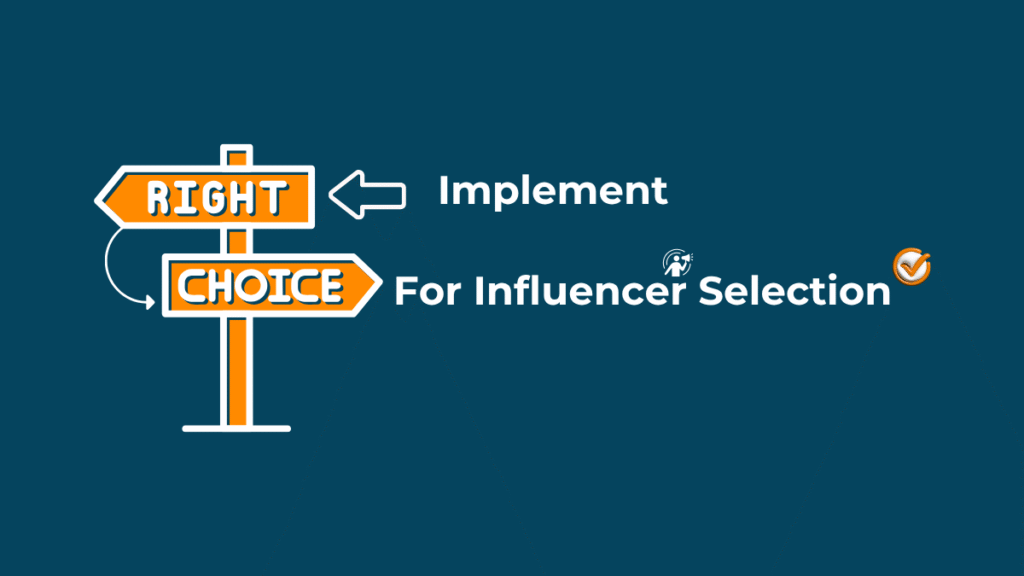Influencer marketing has become a vital tool in brand promotion and awareness. However, not all brands achieve the expected results from their influencer campaigns. This guide explores the five most common mistakes brands make, which might be the reason your influencer campaign failed.
Here is a complete guide for brands and influencers analyzing why influencer campaigns fail, with a focus on the five most common mistakes brands make and how to avoid them.
1. Choosing the Wrong Influencer
Selecting influencers based on follower count or outermost alignment rather than true audience engagement and authenticity remains the most frequent cause of failure. Brands often ignore engagement quality, audience authenticity, and content consistency, resulting in partnerships with low impact and poor ROI. Data reveals campaigns with poorly vetted creators have up to 3x higher failure rates.
One of the most common mistakes brands make is choosing an influencer who isn’t aligned with their brand identity or their target audience. A successful campaign requires a perfect match between the influencer’s followers and your target market. Influencers should also personify the values, appearance, and lifestyle that your brand represents.
How to fix it? Vet influencers for authentic engagement, audience relevance, reliable posting history, and shared brand values.
2. Strategic Misalignment
Campaigns lacking well-defined goals or KPIs often waste budgets and miss critical outcomes. Brands frequently treat influencer partnerships like traditional ad placements, leading to mismatched creative approaches and ineffective results. Rigid briefs further stifle creator authenticity.
Before starting a campaign, it’s important to set clear goals.
- What do you want to achieve? the most important requirement
- Increase brand awareness?
- Drive more traffic to your website?
- Boost sales?
Without clear goals, it’s impossible to measure the campaign’s success. Furthermore, the influencer needs to understand what they’re expected to achieve to align their content accordingly.
How to fix misalignment? Start every campaign by clarifying business goals, measurable KPIs, and ideal influencer outcomes. Allow creators creative freedom to produce authentic content.
3. Overlooking the Importance of Authenticity
Many brands fail by launching campaigns built on outdated market research or missing current cultural shifts. Not tracking trends or changing audience preferences can make even well-funded collaborations flop, costing trust and wasted spend.
Authenticity is crucial in influencer marketing. Followers value genuine endorsements and recommendations. Therefore, it’s a mistake to overly script or control the influencer’s content. Let the influencers communicate in their style. They know their audience best and understand the type of content that resonates with them.
How to fix it? Use real-time analytics and social listening to identify relevant trends, stay active, and adapt influencer strategy quickly.
4. Poor Content Timing and Platform Selection
Even well-matched influencers can underperform if campaigns launch at the wrong time or on the wrong platforms. Brands sometimes ignore platform best practices, audience consumption habits, and seasonal/cultural context.
Monitoring and adjusting your campaign is as important as planning and launching it. If your campaign isn’t bringing the expected results, you should be ready to adjust it. Maybe the content doesn’t resonate with the audience, the posting times are off, or the call-to-action isn’t clear. Regular monitoring allows you to spot these issues and address them promptly.
How to fix it? Match platform to campaign goals and audience, research optimal posting times, and align content with current events and audience rhythms.
5. Expecting Immediate Results
Influencer marketing, like most marketing strategies, often requires TIME to bear fruit. Building brand awareness and trust doesn’t happen overnight. It’s a mistake to expect immediate results and discard a campaign if it doesn’t bring instant returns. Be patient and give your campaign enough time to make an impact.
How to fix it? Maintain transparent influencer contracts, require clear disclosure of sponsored relationships, and ensure campaign honesty to build trust and avoid legal trouble.
Key Takeaway
Successful influencer campaigns demand thoughtful influencer selection, measurable objectives, trend awareness, strategic timing, and full transparency. Brands committing to these steps turn influencer marketing from costly risk into strategic advantage. By avoiding these common mistakes, brands can run successful influencer campaigns.
Remember, it’s about building a relationship with your audience through the influencer. It needs strategic planning, careful execution, and patience to see the desired results.

